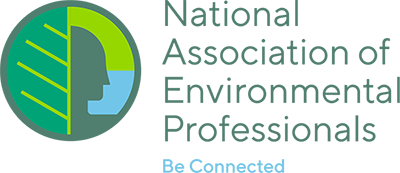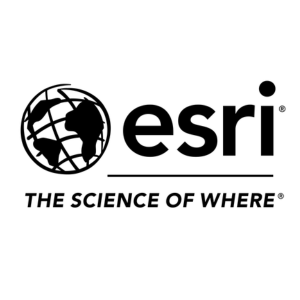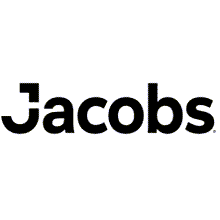
MOA Implementation for the NorthMet Mining Project
Panel Discussion with Speakers
Monday, August 24
10:00–10:45 AM PT | 1:00–1:45PM ET
About the Session
Poly Met Mining, Inc. is proposing to develop a copper-nickel-platinum group elements mine and associated processing facilities near Hoyt Lakes, St. Louis County, Minnesota, known as the NorthMet Mining Project. The Project involves the reactivation and rehabilitation of a former taconite processing facility and development of a new mine site. A Memorandum of Agreement (MOA) has been established outlining mitigation for adverse effects to a diverse set of historic properties, including the:
- Erie Mining Company Landscape Historic District – one of the earliest taconite mine facilities on the Mesabi Iron Range, and includes buildings, structures, mining landscapes, and linear corridors.
- Spring Mine Lake (SML) Sugarbush site – deemed significant for its association with and ability to answer important research questions about early 20th century Ojibwe land use and resource procurement, in particular collection and processing of maple sugar
- Beaver Bay to Lake Vermillion Trail (BBLV): Partridge River Segment – a remnant segment of a historic overland Native American trail
- Mesabe Widjiu: Partridge River Segment – a linear array of hills along the Laurentian Divide considered culturally significant to local Ojibwe Bands
Implementation of the MOA for the NorthMet Mining Project has required coordination among multiple agencies and consulting parties. Mitigation for effects to the Erie Mining Company Landscape Historic District includes architectural surveys, development of a historical context, and preparation of Minnesota Historic Property Records (state-level documentation similar to HABS/HAER/HALS documentation). The complexities of documenting such a large historic district with varied property types has involved understanding how properties are functionally related and navigating the evaluations of those relationships, understanding historic activities of a no longer active mining landscape where physical evidence of that activity is sometimes missing or altered, and using desktop analysis to inventory properties that were inaccessible due to private ownership.Implementing the MOA stipulations for the SML Sugarbush, the BBLV Trail, and Mesabe Widjiu, early and close collaboration with consulting Native American tribes has been critical in understanding and documenting the resources, as well as meeting the timelines stipulated in the MOA. Mitigation for these properties includes Phase III recordation of the BBLV Trail, Phase II intensive survey of the SML Sugarbush, and an ethnographic study for the Mesabe Widjiu.
Our presenters will share multiple perspectives for implementing the MOA, including:
- legal background;
- coordinating meeting the many requirements of the MOA with the Project schedule;
- complexity of engaging with Co-lead federal agencies, consulting agencies, and Native American tribes; and
- logistics of documenting a mining landscape historic district that spans over 23,000 acres across northeastern Minnesota.
Best practices presented will include how to develop sound research designs, thoughtful engagement approaches, and encourage dialogue and interaction among the project proposer, agencies, tribes, and the cultural resources consultant.
About the Speakers
 |
Jenny Bring
Cultural Resources Manager
106 Group
Jennifer is a senior project manager with extensive expertise in cultural resources management and environmental documentation. Her multidisciplinary background in archaeology, architectural history, planning, and business management informs her detailed understanding of National Environmental Policy Act (NEPA) and National Historic Preservation Act (NHPA) Section 106/Section 110 processes, as well as state-level compliance issues. With nationwide project experience, Jennifer can navigate challenges to successfully lead complex projects to completion. Clients have praised Jennifer’s sharp focus and ability to effectively coordinate the NHPA and NEPA processes as project manager for a wide range of projects, including small-scale development projects, interstate pipelines, wind and solar projects, and rail and transit projects. Jennifer has also facilitated consultation with agencies, Native American tribes, and community groups to bring resolution to potential project issues. Jennifer manages the cultural and historical resources documentation for the NorthMet Mining Project MOA Implementation.
|
 |
Dan Ettinger
Partner
Warner Norcross + Judd
J Dan Ettinger is a partner at Warner Norcross + Judd, a full-service law firm with over 200 attorneys in Michigan. He works out of Warner Norcross’s Grand Rapids, Michigan office. He concentrates his practice in the areas of mining and natural resource development, environmental litigation, NEPA and NHPA compliance, and administrative law, with a special focus on issues related to Native American tribes and cultural resources. Dan advises mining and natural resource development clients regarding tribal engagement and consultation, compliance with laws aimed at protecting tribal interests and resources, such as the National Historic Preservation Act, and other cultural resource issues that can arise in the course of permitting a development project. Dan also has extensive experience representing mining and other natural resource development companies in federal and state courts, and before administrative tribunals.
|
 |
Kevin Pylka
Environmental Manager
Poly Met Mining, Inc.
Kevin Pylka is an environmental manager at Poly Met Mining, Inc., a mine development company preparing to mine copper, nickel and precious metals from the NorthMet ore body located near Hoyt Lakes, Minnesota. He has used his diverse engineering and environmental background to successfully manage numerous aspects of environmental review, permitting and compliance within the mining industry. He has effectively led challenging projects in the areas of NEPA and NHPA review, along with federal and state permitting and a land exchange for the mine project. He has succeeded in collaborating with consultants, legal counsel, federal and state agencies, Native American tribes and other stakeholders to navigate through the myriad set of statutes and regulations and the public engagement necessary to permit a mine with modern, responsible and sustainable practices.
|
Back to Top
|





